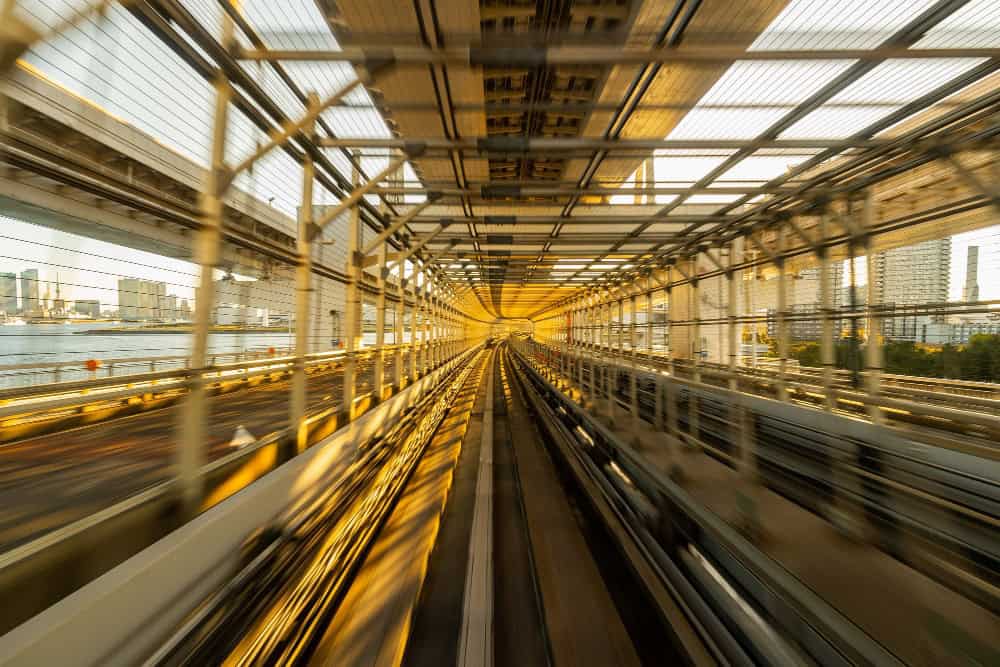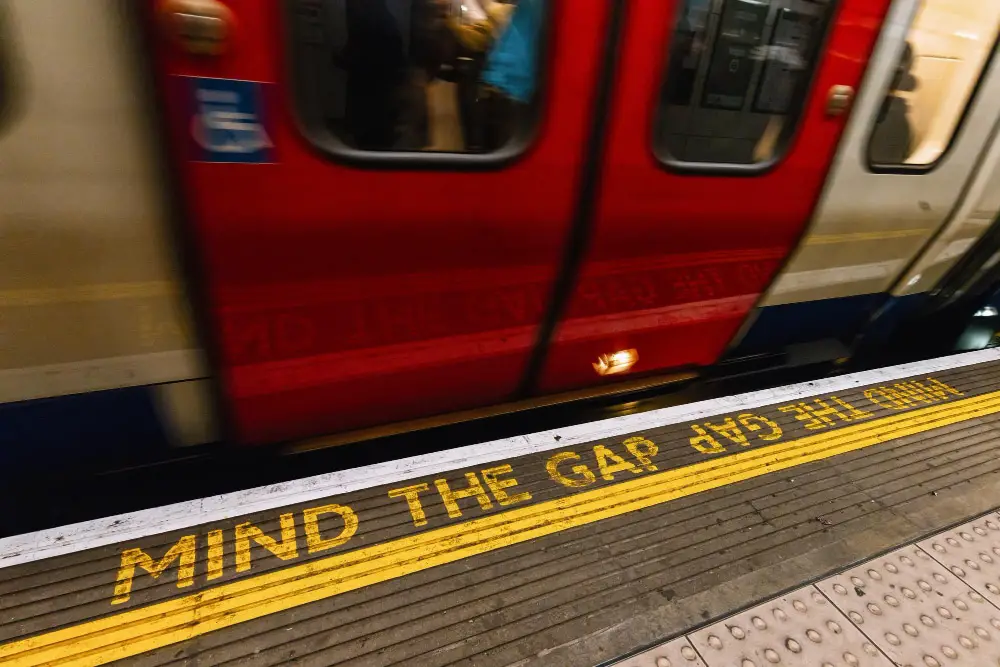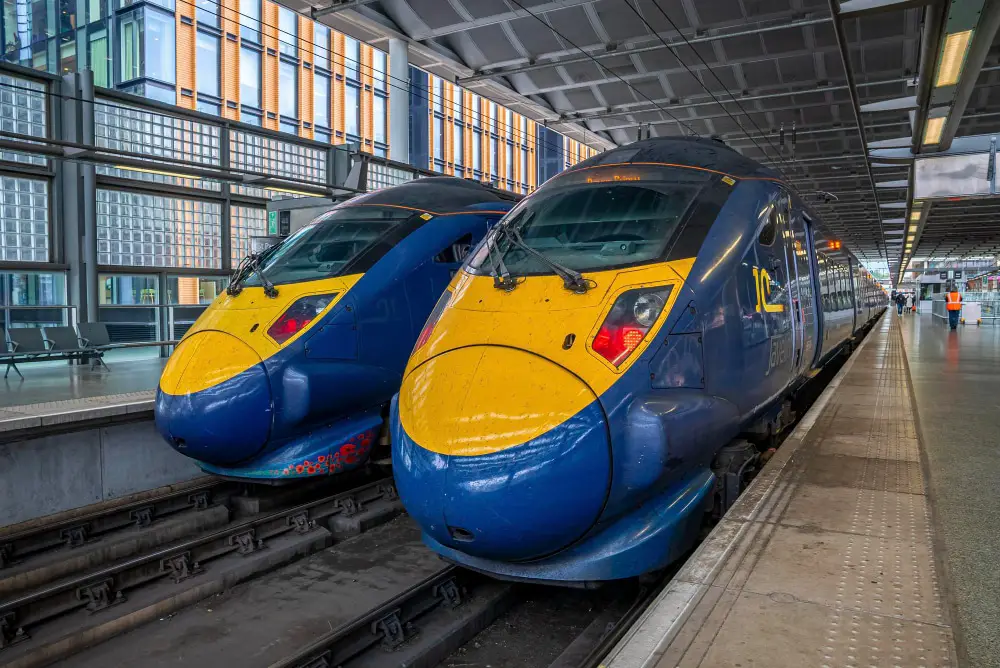How fast do trains go? As for maximum speed, trains can typically reach speeds of up to 140 mph (225 km/h), although some high-speed services are capable of much higher speeds.

On average speed, trains travel at an average speed between 50 and 100 mph (80 and 160 km/h). It depends on factors such as route length and type of train.
For example, freight trains tend to travel at lower speeds than passenger trains due to their heavier weight.
Trains are great! They can take you to any city in the US or other countries. Besides commuting or traveling around, they have become an essential mode of transportation.
While it may seem like an old-fashioned way to travel compared to planes or automobiles, trains are some of the fastest methods of transportation available today.
Although they cannot accelerate as quickly as airplanes or cars, trains can maintain high speeds over long distances. It is possible by accelerating until they reach maximum speed before gradually slowing down again as they approach their destination.
Trains are the best way to travel long distances. They’re faster than buses, more comfortable than planes, and cheaper.
But how fast do trains go in different countries? Are there any speed limits? Read on for more valuable information.
How Fast Do Trains Move MPH?
How fast do trains go in mph? The speed of a train is measured in miles per hour (MPH). Trains move at different speeds depending on the type of train, the time of day, and the route. For example, the average speed of a freight train is 30 mph (48 km/h), while an Amtrak passenger train can travel up to 150 mph (241 km/h).
The fastest trains in the world reach speeds of up to 300 mph (483 km/h). Other trains may travel as slowly as 10 mph (16 kph) or 15 mph (24 kph).
What is the Fastest Speed of a Train?
The fastest speed of a train is about 300 mph (483 km/h), which is the top speed of Japan’s magnetic levitation (maglev) trains. However, the speed of a train can vary.
The fastest train in North America is Amtrak’s high-speed Acela Express, which runs between Boston and New York City.
It averages 60 mph between stations but reaches top speeds of up to 150 mph on sections with no curves or obstructions, such as freight trains or semitrailers.
High-speed trains were introduced in Japan in 1964 with the opening of Japan’s first bullet train, the Tokaido Shinkansen line between Tokyo and Osaka. Many other countries worldwide now have high-speed rail systems that carry passengers at speeds ranging from 160 to 300 miles per hour (257 to 483 km/h).

What is the Fastest Train?
The fastest train in the world is the Shanghai Maglev Train, which can reach a commercial speed of 286 miles per hour. That’s fast enough that you could travel from New York City to Washington, D.C., or from Los Angeles to San Francisco in less than an hour.
Maglev trains use magnetic levitation to float over the tracks, eliminating the friction associated with wheeled trains. The first commercial maglev train was introduced in 1984, and it reached speeds of up to 513 km/h (317 mph).
China has also developed its version of maglev technology known as a high-speed magnetic levitation train or HSMT. The first one was built in 2003 and reached speeds of 430 km/h (267 mph), but its performance has improved since then. In 2012, a new HSMT prototype reached 590 km/h (360 mph) during testing — setting a world record for land vehicles.
How Fast Do Trains Go in the US?
Most trains in the US travel at speeds of up to 110 miles per hour or around 175 kilometers per hour. Some high-speed trains go faster. These trains are electric, so they don’t require any fuel.
The fastest train in the United States is Amtrak’s Acela Express, which travels at an average speed of 150 miles per hour (241 km/h). The Acela Express travels between Boston and New York City.
Amtrak has other high-speed routes in California and Illinois. On these routes, trains can travel up to 220 miles per hour (354 km/h), which is faster than any other public transportation system.
How Fast Do UK Trains Go?
So, how fast do trains go in the UK? The average speed of trains in the UK is about 50mph (80km/h), although it can vary depending on the type of train or route.
The fastest train in the UK is the Eurostar, which travels between London and Paris at speeds of up to 300km/h. The Great Western Railway has trains running at a top speed of 200mph on its High Speed 1 line, while Virgin Trains’ Pendolino trains can reach speeds of up to 140mph.
Trains in the UK are getting faster all the time. There are currently plans to upgrade the track between Birmingham and London, which will allow express services to reach speeds of up to 220mph (354km/h).

How Fast is a Freight Train?
A freight train can reach speeds of up to 90 miles per hour (145 km/h) on main lines while maintaining a speed of 30 mph (50 km/h) on curves. Freight trains have an average speed of 28 mph (45 km/h), but they travel less than 20 mph (32 km/h) under normal circumstances.
You’ve probably heard the phrase “the speed of a freight train,” but have you ever wondered how fast a freight train can go? Well, there you have it now!
In Europe and Japan, trains can go 40 percent faster than in the United States. In Europe, most passenger trains run as fast as 80 mph (130 km/h), and many freight trains run at 60 mph (100 km/h).
How Fast is a Passenger Train?
Intercity passenger trains can reach speeds of up to 300 mph (483 kph), while commuter passenger trains usually top out around 100 mph (161 kph).
A passenger train is faster than a freight train. There are a lot of different factors that come into play when it comes to determining the speed at which a passenger train travels. The most crucial factor is the type of track on which the train is traveling and its gauge.
Intercity trains travel between cities and may include stops in towns along the way, while commuter trains do not make stops between cities. Commuter trains typically run on tracks with a narrower gauge than intercity trains, making them faster because they have less friction on the track.
Is There a Speed Limit For Trains?
Yes! The speed limit for trains varies by country and is usually specified in the Railway Safety Act. In Canada, the maximum authorized speed of a passenger train is 160 km/h (100 mph).
The maximum speed of freight trains varies from one province to another, but it is generally between 100 and 120 km/h (60 to 75 mph).
In the United States, railroad companies have been allowed to operate trains at up to 110 miles per hour (177 km/h) on high-speed lines since 1995. However, most freight trains can only reach about 50 miles per hour (80 km/h).
In the United States, trains are not subject to a set speed limit. Trains are allowed to travel as fast as they can to keep up with traffic conditions and avoid collisions.
Many high-speed trains travel at 200 km/h (124 mph) in Germany, but slower trains must stay below 160 km/h (99 mph). The fastest trains in Japan can reach speeds of 320 km/h (200 mph).

Why Do Trains Go So Fast?
Trains travel at such high speeds because they have steel wheels on steel tracks. These tracks are durable and can withstand high speeds without bending or breaking apart from friction between the metal wheels and rails. It allows trains to reach higher speeds than cars or airplanes that use rubber tires on asphalt roads and concrete runways.
High-speed rail is a growing trend in countries around the world. It allows people to travel safely at faster speeds than other forms of transportation, like cars or planes. High-speed rail lines use dedicated tracks with special equipment for faster service and safety.
Trains: How Fast Are They?
Trains travel at different speeds depending on the type of train, the length of its journey, and whether it’s running on electrified tracks or diesel power. The fastest trains on Earth are magnetic levitation (maglev) trains, which reach up to 581 mph (926 km/h). However, these types of trains are only found in Japan and China.
Most passenger trains move significantly slower than this, about 150 mph (241 kph) for high-speed rail lines like those found in Europe and Asia. These trains can still cover long distances quickly and efficiently compared to driving or flying between cities because they don’t require stops along the way like cars do. If you have been wondering “how fast do trains go?” there you have it!
Safe traveling!
